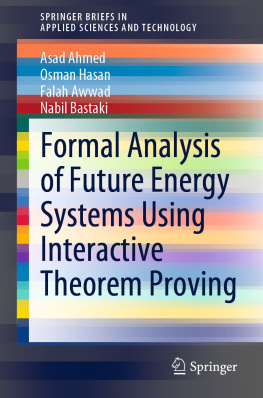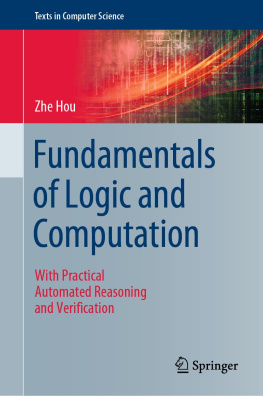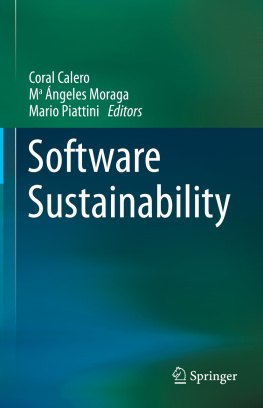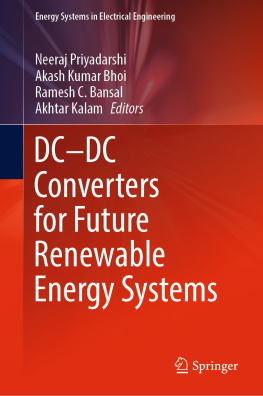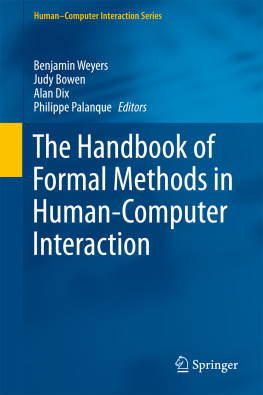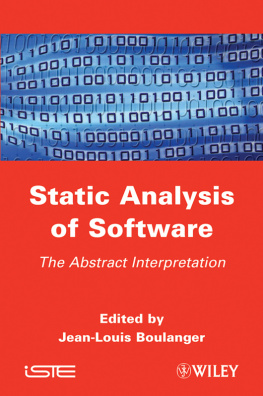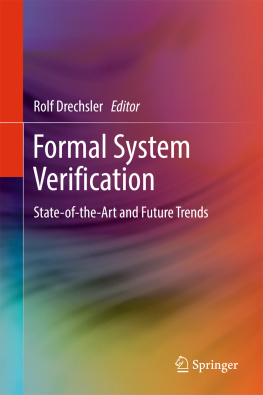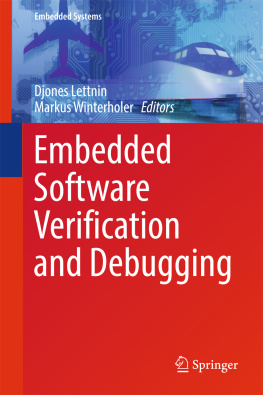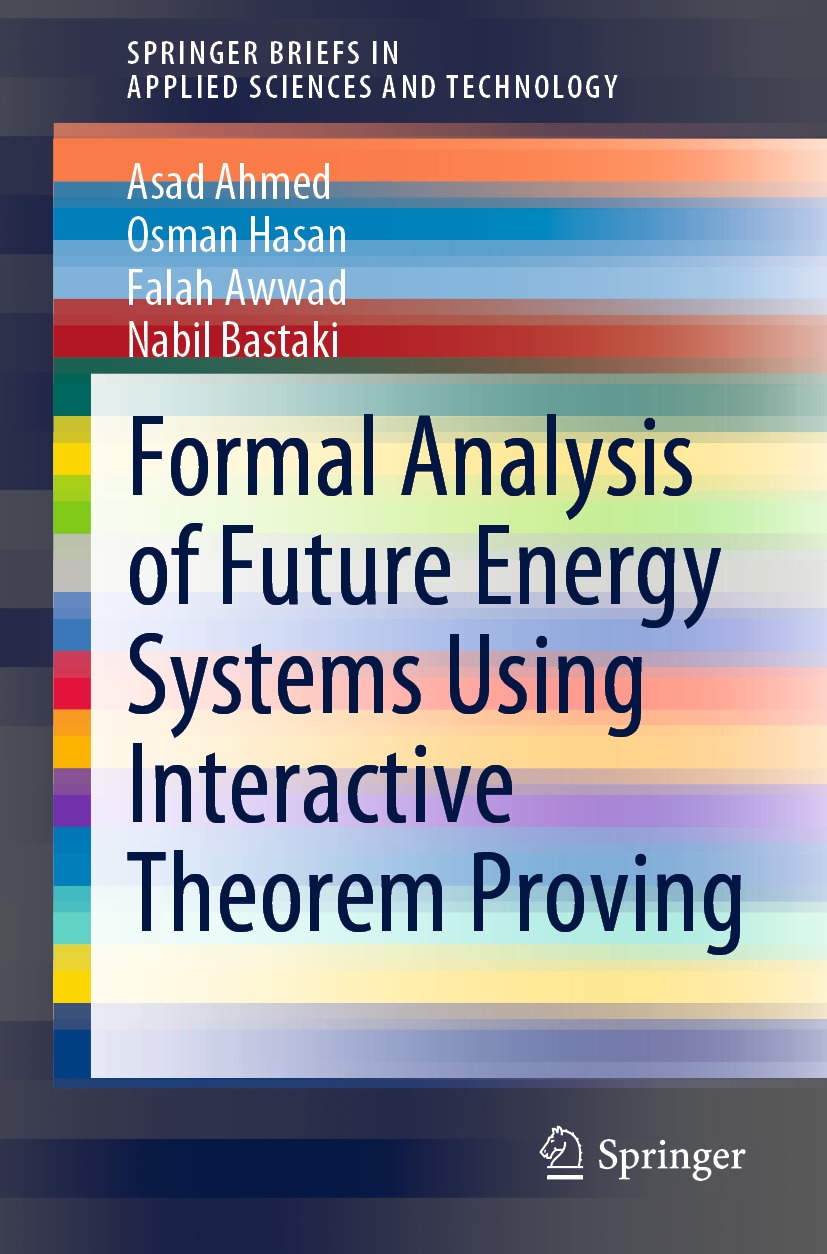SpringerBriefs in Applied Sciences and Technology
SpringerBriefs present concise summaries of cutting-edge research and practical applications across a wide spectrum of fields. Featuring compact volumes of 50 to 125 pages, the series covers a range of content from professional to academic.
Typical publications can be:
A timely report of state-of-the art methods
An introduction to or a manual for the application of mathematical or computer techniques
A bridge between new research results, as published in journal articles
A snapshot of a hot or emerging topic
An in-depth case study
A presentation of core concepts that students must understand in order to make independent contributions
SpringerBriefs are characterized by fast, global electronic dissemination, standard publishing contracts, standardized manuscript preparation and formatting guidelines, and expedited production schedules.
On the one hand, SpringerBriefs in Applied Sciences and Technology are devoted to the publication of fundamentals and applications within the different classical engineering disciplines as well as in interdisciplinary fields that recently emerged between these areas. On the other hand, as the boundary separating fundamental research and applied technology is more and more dissolving, this series is particularly open to trans-disciplinary topics between fundamental science and engineering.
Indexed by EI-Compendex, SCOPUS and Springerlink.
More information about this series at http://www.springer.com/series/8884
Asad Ahmed , Osman Hasan , Falah Awwad and Nabil Bastaki
Formal Analysis of Future Energy Systems Using Interactive Theorem Proving
1st ed. 2022

Logo of the publisher
Asad Ahmed
School of Electrical Engineering and Computer Science (SEECS), National University of Sciences and Technology (NUST), Islamabad, Pakistan
Osman Hasan
School of Electrical Engineering and Computer Science (SEECS), National University of Sciences and Technology (NUST), Islamabad, Pakistan
Falah Awwad
Department of Electrical Engineering, United Arab Emirates University, Al-Ain, United Arab Emirates
Nabil Bastaki
Department of Electrical Engineering, United Arab Emirates University, Al-Ain, United Arab Emirates
ISSN 2191-530X e-ISSN 2191-5318
SpringerBriefs in Applied Sciences and Technology
ISBN 978-3-030-78408-9 e-ISBN 978-3-030-78409-6
https://doi.org/10.1007/978-3-030-78409-6
The Author(s), under exclusive license to Springer Nature Switzerland AG 2022
This work is subject to copyright. All rights are solely and exclusively licensed by the Publisher, whether the whole or part of the material is concerned, specifically the rights of translation, reprinting, reuse of illustrations, recitation, broadcasting, reproduction on microfilms or in any other physical way, and transmission or information storage and retrieval, electronic adaptation, computer software, or by similar or dissimilar methodology now known or hereafter developed.
The use of general descriptive names, registered names, trademarks, service marks, etc. in this publication does not imply, even in the absence of a specific statement, that such names are exempt from the relevant protective laws and regulations and therefore free for general use.
The publisher, the authors and the editors are safe to assume that the advice and information in this book are believed to be true and accurate at the date of publication. Neither the publisher nor the authors or the editors give a warranty, expressed or implied, with respect to the material contained herein or for any errors or omissions that may have been made. The publisher remains neutral with regard to jurisdictional claims in published maps and institutional affiliations.
This Springer imprint is published by the registered company Springer Nature Switzerland AG
The registered company address is: Gewerbestrasse 11, 6330 Cham, Switzerland
To our families
Preface
Smart grids are large and complex networks which mainly employ information and communications technologies (ICT) to ensure cost-effective, efficient, secure and reduced carbon emission energy utilization. Traditionally, paper-and-pencil and simulation methods are used to analyze various aspects of smart grid functionalities. However, these techniques suffer from severe, inherent, limitations in terms of scalability and accuracy. This book presents a theorem proving based logical framework for conducting an accurate analysis of safety- or mission-critical aspects of smart grids. The analysis using this logical framework is highly reliable due to the sound and complete nature of the theorem-proving technique.
The book presents the higher-order-logic formalizations of stability, microeconomics models of cost and utility function and asymptotic theory. These formalizations provide higher-order logic models of the aforementioned theories and their formally verified characteristics within the sound core of the HOL Light theorem prover. These formalizations are then employed to formally verify power converter design, cost and utility models and asymptotic bounds of online scheduling algorithms in smart grids.
The book starts with a brief introduction (Chap. concludes the book.
The target audience of this book are engineers and scientists working in the domains of system analysis and formal methods. These system analysis experts would be able to learn about the potential applications of formal methods, especially, in the safety- and mission-critical applications of smart grids. On the other hand, the online availability of the mechanized proofs provides an opportunity to practitioners to apply these generic formalizations to many other safety- and mission-critical engineering applications, which use these mathematical notions. The whole idea of using theorem proving for smart grids has a great potential to ensure the safe and secure implementation of these state-of-the-art future energy systems.
Asad Ahmed
Osman Hasan
Falah Awwad
Nabil Bastaki
Islamabad, Pakistan Islamabad, Pakistan Al-Ain, UAE Al-Ain, UAE
April 2021
Acronyms
ABC
Artificial Bee Colony Algorithm
ATP
Automated Theorem Proving
AVR
Average Rate
DER
Distributed Energy Resources
DR
Demand Response
ELF
Expected Load Flattening
EV
Electric Vehicle
FSM
Finite State Machines
ICT
Information and Communications Technology
ITP
Interactive Theorem Proving
LCF
Logic Computable Functions
MPC
Model Predictive Control
OA
Optimal Available
ORCHARD
Online cooRdinated CHARging Decision algorithm
PEV
Plug-in Electric Vehicle
SG
Smart Grid
TF
Transfer Function
Contents
The Author(s), under exclusive license to Springer Nature Switzerland AG 2022
A. Ahmed et al. Formal Analysis of Future Energy Systems Using Interactive Theorem Proving SpringerBriefs in Applied Sciences and Technology https://doi.org/10.1007/978-3-030-78409-6_1

